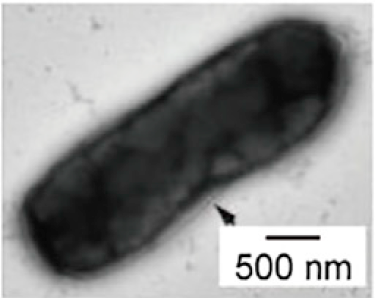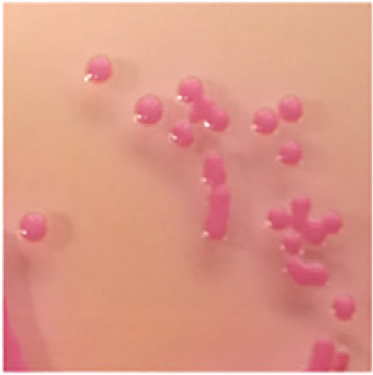This essay is written by Jongsik Jon Chun, a professor at the Department of Biological Sciences, Seoul National University and translated by ChunLab staffs. The author is also actively engaged in R&D as a major board member at ‘ChunLab, Inc.
An investigation record on a “brewing maestro” residing within the large intestine.
Let us answer the question with the latest scientific research.
Although Chen was regularly drunk as his peers, one huge difference was he haven’t drank a single drop of alcohol. He then returned to China with this open ‘secret’. Even when Chen did not drink at all, his blood alcohol level reached 10fold the legal limit of driving under the influence. At last, when he turned 27, he was hospitalized in an intensive care unit in Beijing. According to the CT scan, he had a severely damaged liver full of fat that is similar to that of an alcoholics’.
Liver disease in humans can be categorized in two: alcohol-induced and non-alcohol induced. In Chen’s case, his illness was not caused by the consumption of alcohol. Therefore it should be classified as a non-alcohol induced liver disease. However, his blood alcohol level is suggesting the exact opposite.
Doctor Jing Yuan and his medical team in Beijing took charge of Chen suspected auto-brewery syndrome which is an extremely rare condition. The microorganism most frequently used when fermenting alcohol to produce beer and wine is yeast which is a type of mold. Although it’s uncommon, there are sporadically reported cases of this microorganism fermenting alcohol within the large intestine of a human, not in a brewery. If a person has a lot of these microorganisms in the large intestine, alcohol is produced and absorbed within one’s large intestine, leading to intoxication just by consuming carbohydrates such as rice, noodles and coke. Doctor Yuan prescribed Chen antifungal agents that kill yeasts, but the result was not successful. After much deliberation, the medical team initiated an examination on the ecosystem of microorganism inside Chen’s large intestine, known as the microbiome.
Through this examination which interprets the DNA of microorganisms, the medical team was able to observe the intestinal-bacteria with approximately 38 trillion bacteria in detail. In Chen’s intestine, the team found one bacteria was prominently large in number when compared to that of the ordinary people. The name of this bacteria is Klebsiella pneumonia. This bacteria is not typically found in the intestine but is an opportunistic pathogen that is known for its bad name. Chen had a 900 fold more Klebsiella pneumonia than an average Chinese people.
Doctor Yuan immediately injected antibiotics to Chen to kill the bacteria. The aforementioned antifungal agents can kill yeast, but not bacteria. Furthermore, to stop the alcohol fermentation occurring inside the intestine, Doctor Yuan restricted Chen’s intake of carbohydrates that enhanced the microzymes. As a result, Chen’s blood alcohol level dropped sharply and he was freed from the acute liver disease. And yes, he sobered up as well.
The medical team conducted a stool analysis on Chen and found that Klebsiella pneumonia decreased in numbers as the blood alcohol level drops. This provided a reliable proof in narrowing down the culprit of Chen’s peculiar illness.
Now to confirm the culprit, Doctor Yuan took Chen’s stool, then isolated and cultured the bacteria. After the intensive interrogation (research), he faced the astonishing fact that this one is unlike other bacteria of its kind. It was an alcohol fermenting maestro bacteria (in another name, brewing maestro bacteria.) There are a variety of bacteria including the ones with enough toxicity to even kill humans. On the other hand, this one had genes specialized in fermenting alcohol. Spying out the culprit took a long time since it was the first case where a bacteria, not a mold, was found to be capable of brewing.


The culprit has finally been exposed through cultivation.
Next, to determine whether this brewing maestro bacteria was capable of causing liver disease, sterile mice was used. The team fed mice with carbohydrates and bacteria. They easily found that the brewing maestro bacteria could cause fatty liver disease to the mice as well, just as it did to Chen.
Doctor Yuan tested if other Chinese people carried these brewing maestro bacteria too. Surprisingly, he found that a substantial number of patients who suffered non-alcohol induced fatty liver disease had these bacteria within their large intestine.
The reason this study holds a high importance is because the non-alcohol induced fatty liver disease is on a rapid hike in most countries with the recent spread of the western diet. The illness may initially occur as fatty liver disease, but can later develop into cirrhosis where fibrous in the liver thickens and even lead to liver cancer. Yet there is no precise cure at the time, hence the prevention is the best choice we have. In Korea, 20 to 30 percent of the population carry fatty liver disease and the number is constantly rising. Therefore, fatty liver disease will be a huge social burden in the near future. The experiment introduced previously was carried out in China but numbers suggest ample reasons for Korea to determine the impact of these brewing maestro bacteria as well. If you are worried that you might have a brewing maestro in your intestine, it is a good idea to get a microbiome checkup or decrease your consumption of carbohydrates
Now, to return to our original question, “Can you be measured positive for breath alcohol test without a single drop of alcohol?” The answer is “Yes.” However, proving the answer may require not only a microbiome examination but also more complicated isolation and cultivation test of the microorganism. According to the news report from CNN, a woman was charged as drunk driving in New York as her blood alcohol level was four times higher than the legal-limit. Nevertheless, she was acquitted when she submitted a medical diagnosis showing that she suffered from the auto-brewery syndrome. In fact, the first case of this illness was reported as early as 100 years ago, and it has been there for a long time. Nevertheless, because it is a rare disease and patients do not realize they are drunk in everyday life, they do not go through specific examinations which sometimes end up developing fatty liver disease without knowing.
In many cases, the relationship between liver disease and the intestinal microorganisms has been revealed through microbiome studies. Exploring the cures and precautionary measures through microbiomes would also be a process worthy of research. By the way, I go through a microbiome examination regularly and have not found a single Klebsiella pneumonia was in my intestine for the last three years. Still, I am planning to cut down carbohydrates and alcohol consumption. This posting is based on the research paper attached below. For the readers who wish to view the details, please refer to the original paper.
Reference
- 1.Yuan J, Chen C, Cui J, et al. Fatty Liver Disease Caused by High-Alcohol-Producing Klebsiella pneumoniae. Cell Metabolism. October 2019:675-688.e7. doi:10.1016/j.cmet.2019.08.018

